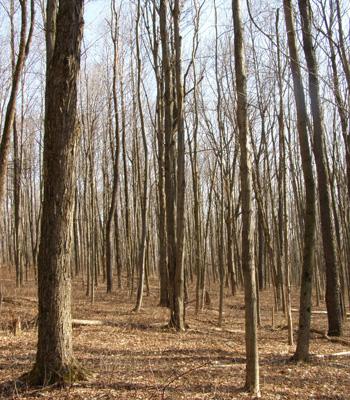Predicting Effects of Even-aged Silviculture on Commodity Production and Carbon Sequestration in Northern Hardwood Stands

Appropriate management of northeastern forests has both ecological and economic importance. Maintaining biologically diverse and economically viable forests into the future insures a rich array of values that sustain people’s lives and enhance their quality of living. Understanding and predicting forest stand development is central to sustainable forest management.
NSRC researchers forecast future forest stocks and flows, timber yields, and effects of different intermediate thinning treatments on even-aged northern hardwood forest stands. Researchers modified an uneven-aged northern hardwood stand simulator (computer model) to portray development of even-aged stands. They re-measured even-aged stands to document change in tree sizes and abundance and developed tree growth and mortality functions. The modified simulator uses measures of relative tree density rather than stand basal area to alter growth rates and survival of trees at different levels of stand stocking. The new simulator allows users to compare outcomes from different intermediate thinning treatments and convert tree volumes to estimates of sequestered carbon.
The simulator confirmed that larger trees of the upper canopy grow most rapidly, and all trees grow more rapidly at lower stand relative density. Estimates of mortality show greater losses among smaller trees, that rate of mortality is related to stand relative density, and the potential for mortality increases with time. The simulator provides managers with a range of outcomes depending on different thinning strategies, including effects on stand structure and rates of development, and helps them balance sustainable production of timber and sequestration of carbon. Nine workshops and conferences delivered findings to forest managers, landowners, industry personnel, and other natural resource practitioners.
